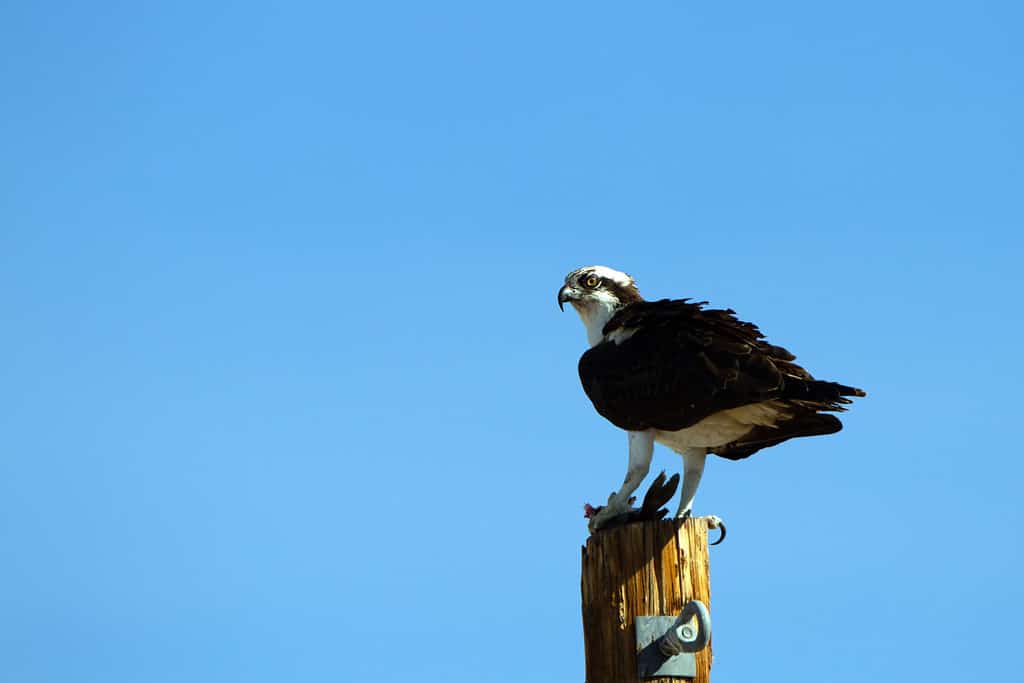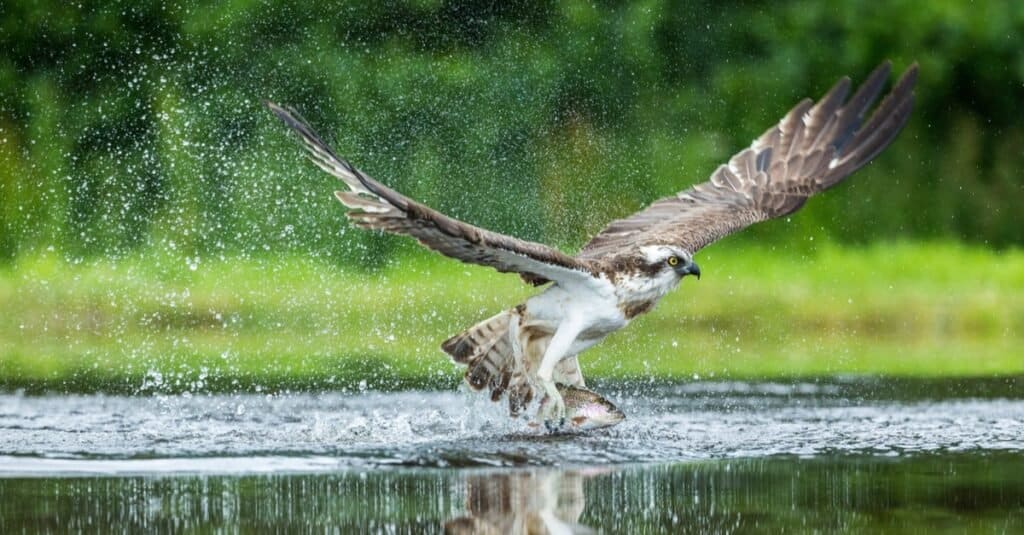What a superb hunting machine the osprey is! With pinpoint precision, it dips its feet into the ocean and grasps an unsuspecting fish before it has a chance to work out what is going on. Watch the full video of this magnificent bird of prey in action.
Osprey Population: How Many Are There in the World?

Osprey numbers are actually increasing!
©Martha Marks/Shutterstock.com
The great news is that ospreys are not an endangered species. They have a very large range, and their numbers seem to be increasing. This means that they are categorized as ‘Of Least Concern’ by the IUCN.
It is estimated that there are between 9,600-13,600 pairs in Europe, which makes up 14 percent of their global range. The North American population is estimated at 400,000 mature birds, and the global population has been estimated at 1,200,000 mature individuals.
However, the North African population is endangered, as there are only around 140 mature individuals left.
What Are the Threats to the Osprey Population?

Ospreys were often hunted in the past by humans, causing their population to decline.
©Gregory Johnston/Shutterstock.com
Historically, ospreys were hunted, and their eggs were taken by humans, and this caused their numbers to fall. Deforestation and pesticide use further impacted their populations. Many of their previous threats have now been reduced, but they are still potentially affected by wind energy development, shooting, and entanglement in fishing nets.
Ospreys primarily feed on medium-sized fish – both marine and freshwater. As is obvious from this clip, they are experts at both spotting the fish and then swooping down to catch them.
If trawler fishing depletes fish stocks, it can impact the osprey’s available prey and, therefore, also reduce their numbers.
How Do Osprey Normally Hunt Fish?

Ospreys have excellent vision and can detect underwater objects from the air.
©BlueBarronPhoto/Shutterstock.com
Osprey use a technique that consists of four stages. Firstly, they scan the water from between 30 and 130 feet in the air. Once the fish is spotted, they dive. However, they may hover for a while just to confirm that what they have spotted is, in fact, a fish!
The dive towards the water is often diagonal, but it can be vertical. They mainly rely on gravity but may take some wing beats to speed it up. Just before they hit the water, they extend their legs forward. It can take a couple of seconds to adjust their grip and make sure that the fish is firmly secured. Then, they take off and find somewhere to enjoy their meal!
How Large Do Ospreys Get?

An Osprey has a wingspan of about five feet.
©LMIMAGES/Shutterstock.com
Ospreys are among the largest species of birds of prey, although they are smaller in comparison to, say, bald eagles. They typically possess an average wingspan of five feet. While they are smaller than a bald eagle, they are larger than the red-tailed hawk.
In terms of length, they measure between 21 to 23 inches and generally weigh in the range of three to four pounds.
Notably, the female osprey is larger in size than the male.
The photo featured at the top of this post is © BlueBarronPhoto/Shutterstock.com
Thank you for reading! Have some feedback for us? Contact the AZ Animals editorial team.






